
前言:
🎯个人博客:Dream_Chaser
🎈博客专栏:C++
📚本篇内容:list的介绍及使用
list****的介绍及使用
1.list****的含义

列表是序列容器,允许在序列内的任何位置进行常量时间的插入和删除操作,以及两个方向的迭代。
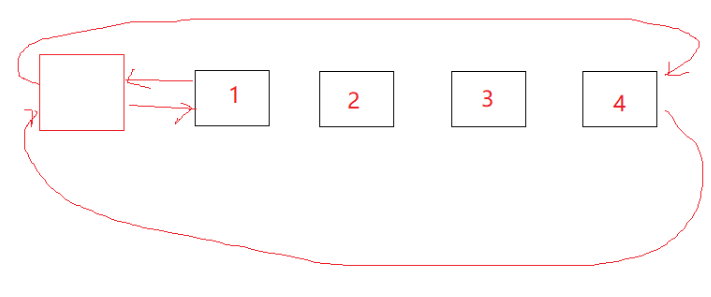
容器的分类:
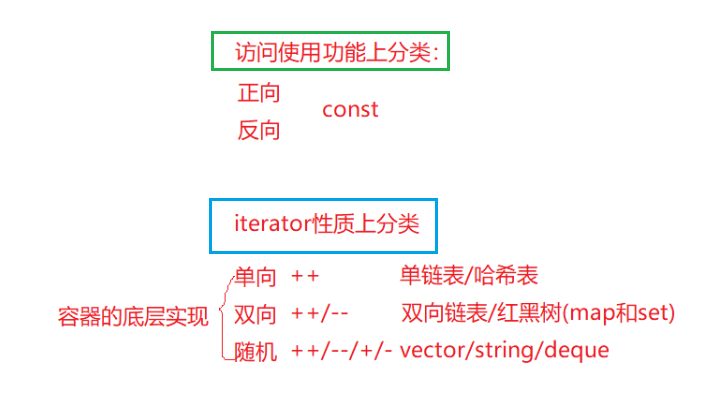
2.list的介绍
*1.list是可以在常数范围内在任意位置进行插入和删除的序列式容器,并且该容器可以***前后双向迭代。 **
*2. list的底层是双向链表结构,双向链表中每个元素存储在互不相关的独立节点中,在节点中***通过指针指向其前一个元素和后一个元素。 **
**3. list与forward_list非常相似:最主要的不同在于forward_list是单链表,只能朝前迭代,已让其更简单高效。 **
*4. 与其他的序列式容器相比(array,vector,deque),list通常在任意位置进行插入、移除元素*的执行效率更好。 **
5. 与其他序列式容器相比,list和forward_list最大的缺陷是不支持任意位置的随机访问,比如:要访问list的第6个元素,必须从已知的位置(比如头部或者尾部)迭代到该位置,在这段位置上迭代需要线性的时间开销;list还需要一些额外的空间,以保存每个节点的相关联信息(对于存储类型较小元素的大list来说这可能是一个重要的因素)
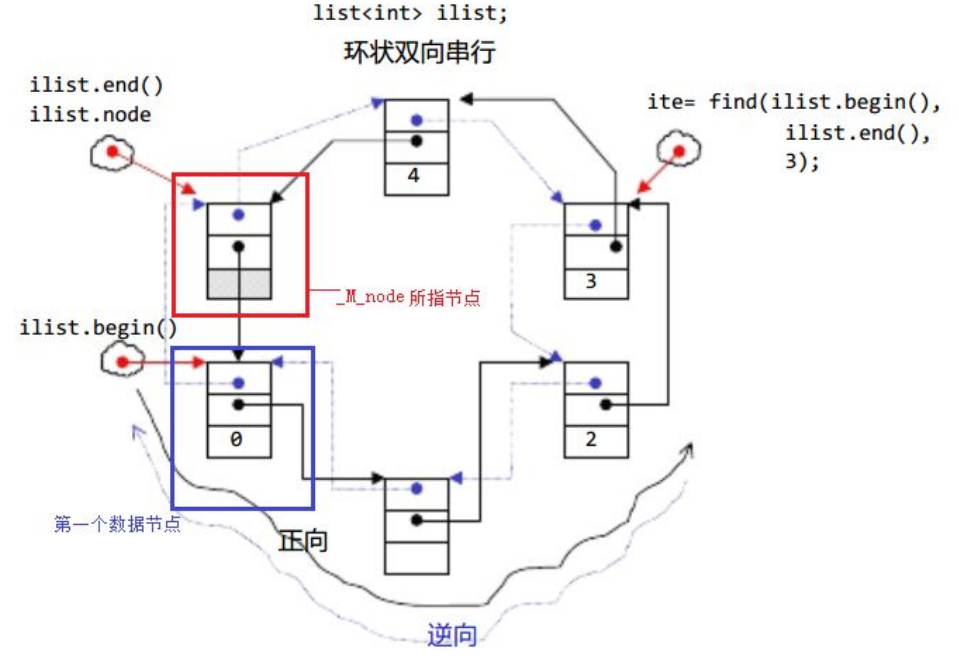
3.list****的使用
list中的接口比较多,此处类似,只需要掌握如何正确的使用,然后再去深入研究背后的原理,已达到可扩展的能力。以下为list中一些常见的重要接口
1.list****的构造
构造函数( (constructor))
接口说明
**list (size_type n, const value_type& val = value_type()) **
构造的list中包含n个值为val的元素
**list() **
*构造空的***list **
**list (const list& x) **
拷贝构造函数
**list (InputIterator first, InputIterator last) **
用**[first, last)区间中的元素构造list**
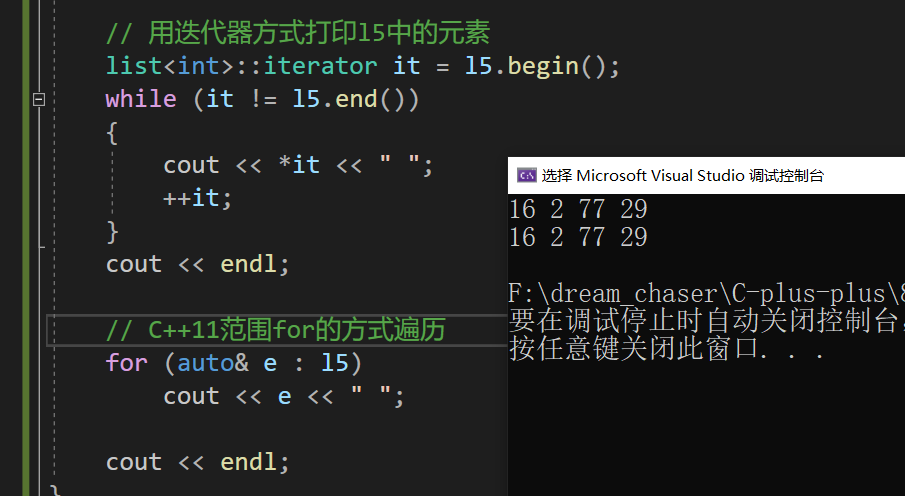
void TestList1()
{
list<int> l1; // 构造空的l1
list<int> l2(4, 100); // l2中放4个值为100的元素
list<int> l3(l2.begin(), l2.end()); // 用l2的[begin(), end())左闭右开的区间构造l3
list<int> l4(l3); // 用l3拷贝构造l4
// 以数组为迭代器区间构造l5
int array[] = { 16,2,77,29 };
list<int> l5(array, array + sizeof(array) / sizeof(int));
// 列表格式初始化C++11
list<int> l6{ 1,2,3,4,5 };
// 用迭代器方式打印l5中的元素
list<int>::iterator it = l5.begin();
while (it != l5.end())
{
cout << *it << " ";
++it;
}
cout << endl;
// C++11范围for的方式遍历
for (auto& e : l5)
cout << e << " ";
cout << endl;
}
*2.list iterator***的使用 **
此处,大家可暂时将迭代器理解成一个指针,该指针指向list****中的某个节点。
函数声明
**接口说明 **
begin +
**end **
返回第一个元素的迭代器+返回最后一个元素下一个位置的迭代器
rbegin +
rend
*返回第一个元素的*reverse_iterator,即end**位置,返回最后一个元素下一个位置的 **
*reverse_iterator,即begin***位置 **
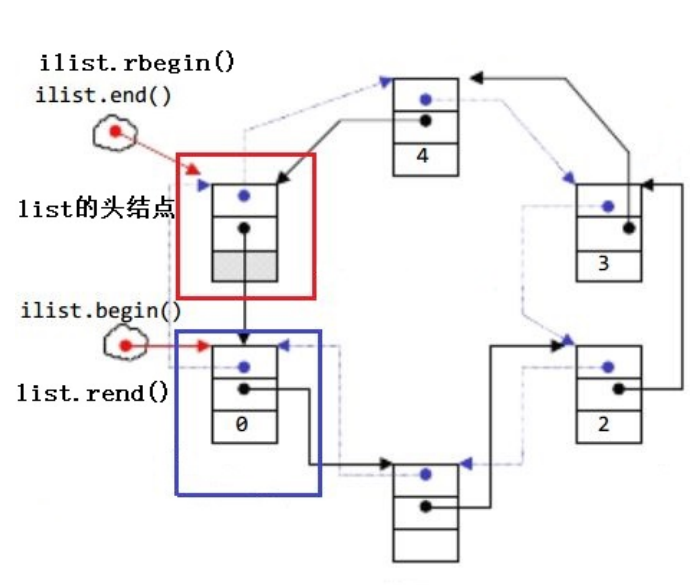
**【注意】 **
begin与end为正向迭代器,对迭代器执行**++****操作,迭代器向后移动 **
*rbegin(end)与***rend(begin)为反向迭代器,对迭代器执行++**操作,迭代器向前移动
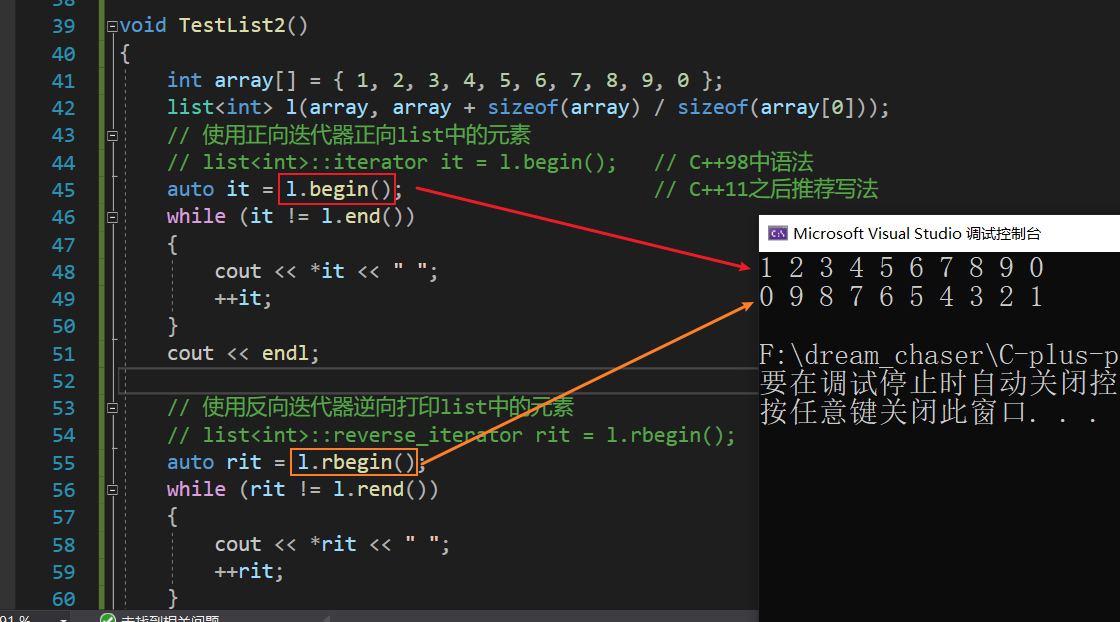
void TestList2()
{
int array[] = { 1, 2, 3, 4, 5, 6, 7, 8, 9, 0 };
list<int> l(array, array + sizeof(array) / sizeof(array[0]));
// 使用正向迭代器正向list中的元素
// list<int>::iterator it = l.begin(); // C++98中语法
auto it = l.begin(); // C++11之后推荐写法
while (it != l.end())
{
cout << *it << " ";
++it;
}
cout << endl;
// 使用反向迭代器逆向打印list中的元素
// list<int>::reverse_iterator rit = l.rbegin();
auto rit = l.rbegin();
while (rit != l.rend())
{
cout << *rit << " ";
++rit;
}
cout << endl;
}
**3.list capacity **

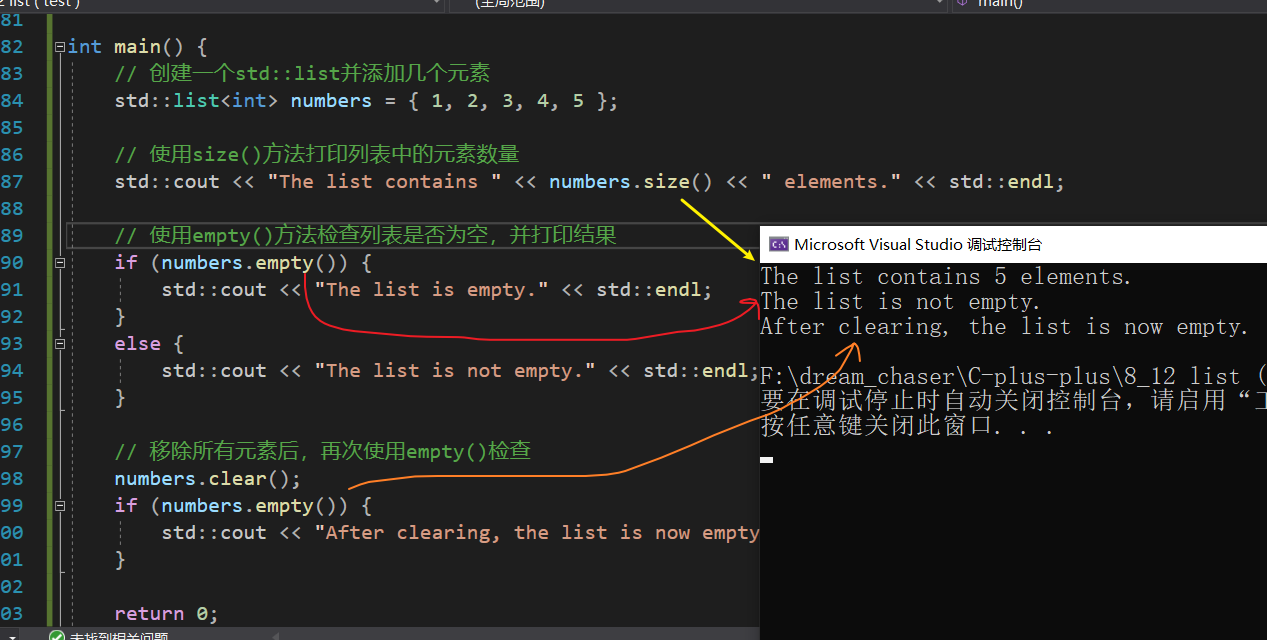
#include <iostream>
#include <list>
int main() {
// 创建一个std::list并添加几个元素
std::list<int> numbers = { 1, 2, 3, 4, 5 };
// 使用size()方法打印列表中的元素数量
std::cout << "The list contains " << numbers.size() << " elements." << std::endl;
// 使用empty()方法检查列表是否为空,并打印结果
if (numbers.empty()) {
std::cout << "The list is empty." << std::endl;
}
else {
std::cout << "The list is not empty." << std::endl;
}
// 移除所有元素后,再次使用empty()检查
numbers.clear();
if (numbers.empty()) {
std::cout << "After clearing, the list is now empty." << std::endl;
}
return 0;
}
4.list element access
**函数声明 **
**接口说明 **
front
*返回list*的第一个节点中值的引用 **
**back **
返回list的最后一个节点中值的引用
**5 list modifiers **
函数声明
**接口说明 **
**push_front **
*在list首元素前插入值为val*的元素 **
**pop_front **
删除list中第一个元素
push_back
*在list尾部插入值为val*的元素 **
pop_back
删除list中最后一个元素
insert
*在*list position 位置中插入值为val*的元素*
erase
删除list position位置的元素
**swap **
交换两个list中的元素
**clear **
清空list中的有效元素
尾插尾删 和 头插头删
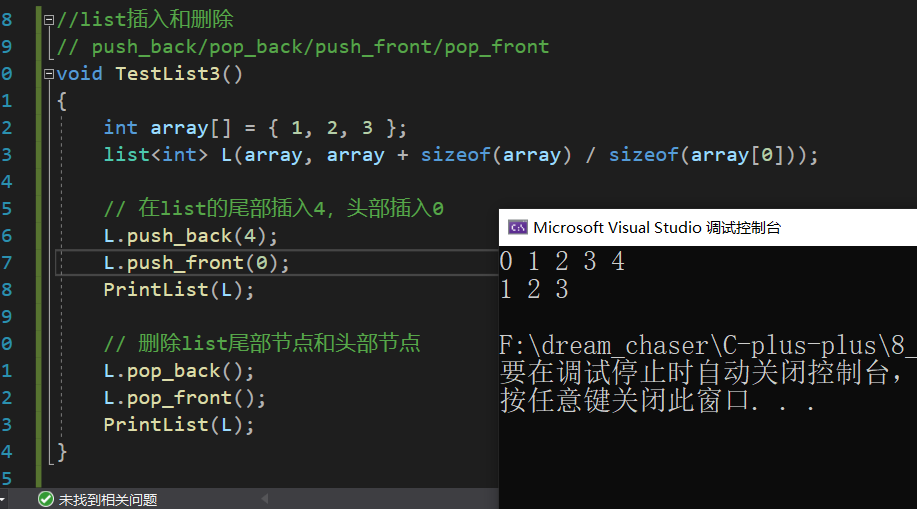
/ list迭代器的使用
// 注意:遍历链表只能用迭代器和范围for
void PrintList(const list<int>& l)
{
// 注意这里调用的是list的 begin() const,返回list的const_iterator对象
for (list<int>::const_iterator it = l.begin(); it != l.end(); ++it)
{
cout << *it << " ";
// *it = 10; 编译不通过
}
cout << endl;
}
//list插入和删除
// push_back/pop_back/push_front/pop_front
void TestList3()
{
int array[] = { 1, 2, 3 };
list<int> L(array, array + sizeof(array) / sizeof(array[0]));
// 在list的尾部插入4,头部插入0
L.push_back(4);
L.push_front(0);
PrintList(L);
// 删除list尾部节点和头部节点
L.pop_back();
L.pop_front();
PrintList(L);
}
insert 和 erase
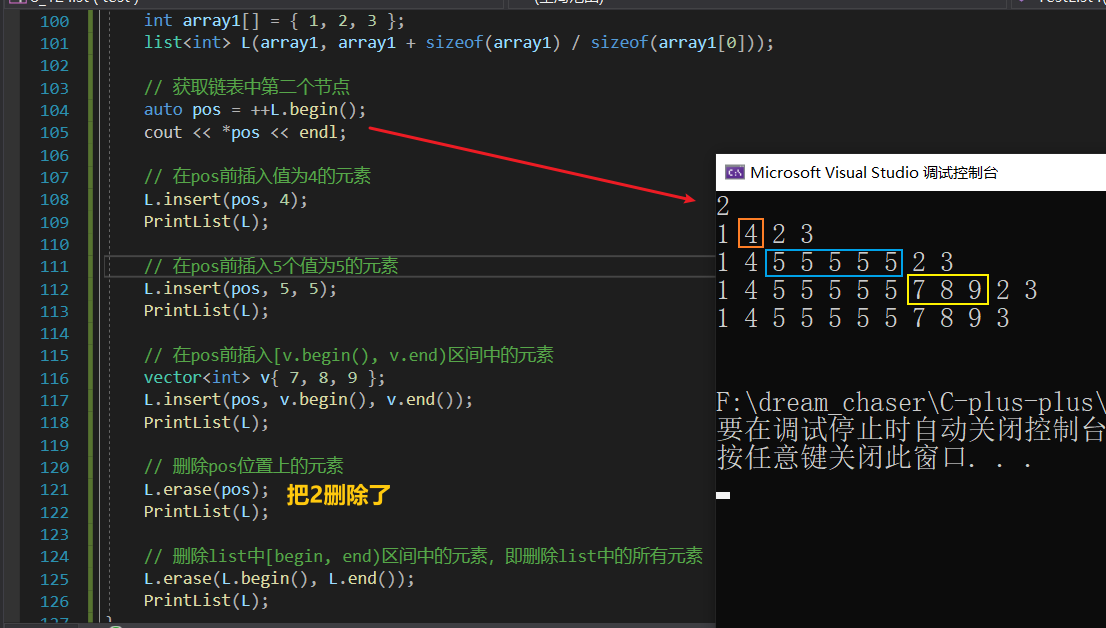
// insert /erase
void TestList4()
{
int array1[] = { 1, 2, 3 };
list<int> L(array1, array1 + sizeof(array1) / sizeof(array1[0]));
// 获取链表中第二个节点
auto pos = ++L.begin();
cout << *pos << endl;
// 在pos前插入值为4的元素
L.insert(pos, 4);
PrintList(L);
// 在pos前插入5个值为5的元素
L.insert(pos, 5, 5);
PrintList(L);
// 在pos前插入[v.begin(), v.end)区间中的元素
vector<int> v{ 7, 8, 9 };
L.insert(pos, v.begin(), v.end());
PrintList(L);
// 删除pos位置上的元素
L.erase(pos);
PrintList(L);
// 删除list中[begin, end)区间中的元素,即删除list中的所有元素
L.erase(L.begin(), L.end());
PrintList(L);
}
resize swap clear
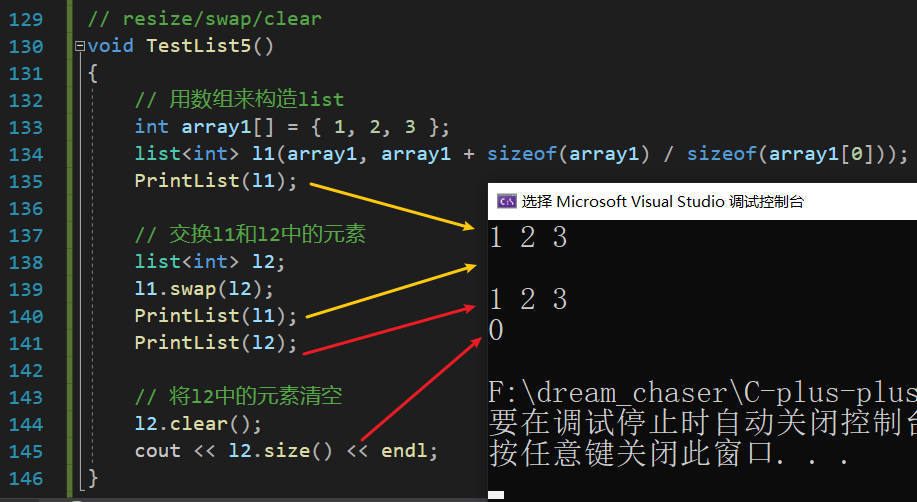
void TestList5()
{
// 用数组来构造list
int array1[] = { 1, 2, 3 };
list<int> l1(array1, array1 + sizeof(array1) / sizeof(array1[0]));
PrintList(l1);
// 交换l1和l2中的元素
list<int> l2;
l1.swap(l2);
PrintList(l1);
PrintList(l2);
// 将l2中的元素清空
l2.clear();
cout << l2.size() << endl;
}
6.list sort and reverse
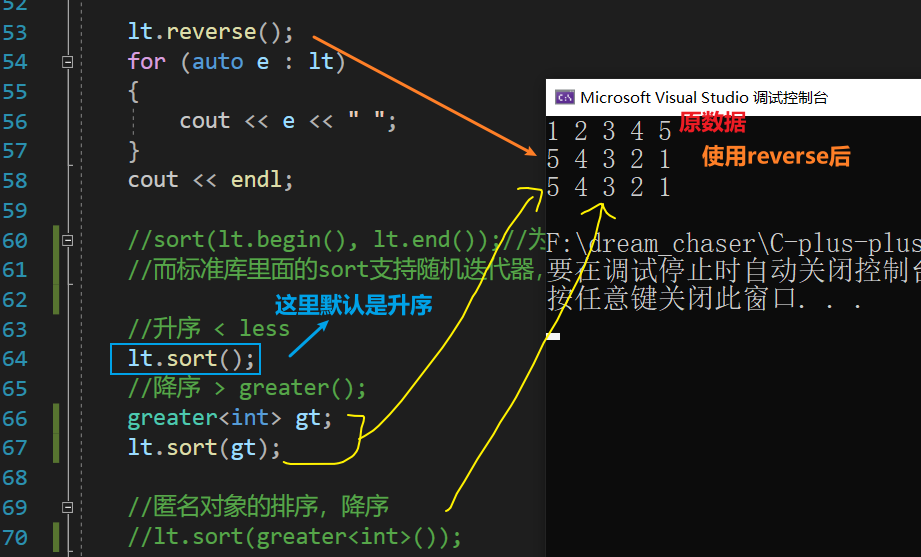
void test_list2()
{
list<int> lt;
lt.push_back(1);
lt.push_back(2);
lt.push_back(3);
lt.push_back(4);
lt.push_back(5);
for (auto e : lt)
{
cout << e << " ";
}
cout << endl;
lt.reverse();
for (auto e : lt)
{
cout << e << " ";
}
cout << endl;
//sort(lt.begin(), lt.end());//为什么这个不能用呢?那是因为,list是双向迭代器
//而标准库里面的sort支持随机迭代器,要用list自己的sort函数 lt.sort
//升序 < less
lt.sort();
//降序 > greater();
//greater<int> gt;
//lt.sort(gt);
//匿名对象的排序,降序
lt.sort(greater<int>());
for (auto e : lt)
{
cout << e << " ";
}
cout << endl;
}
7.list copy vector copy list
代码测这种性能要把它换成 Release,debug的优化没有全开的,导致递归和循环,次数比较多,差异是比较大的,但是Release的差距不大。
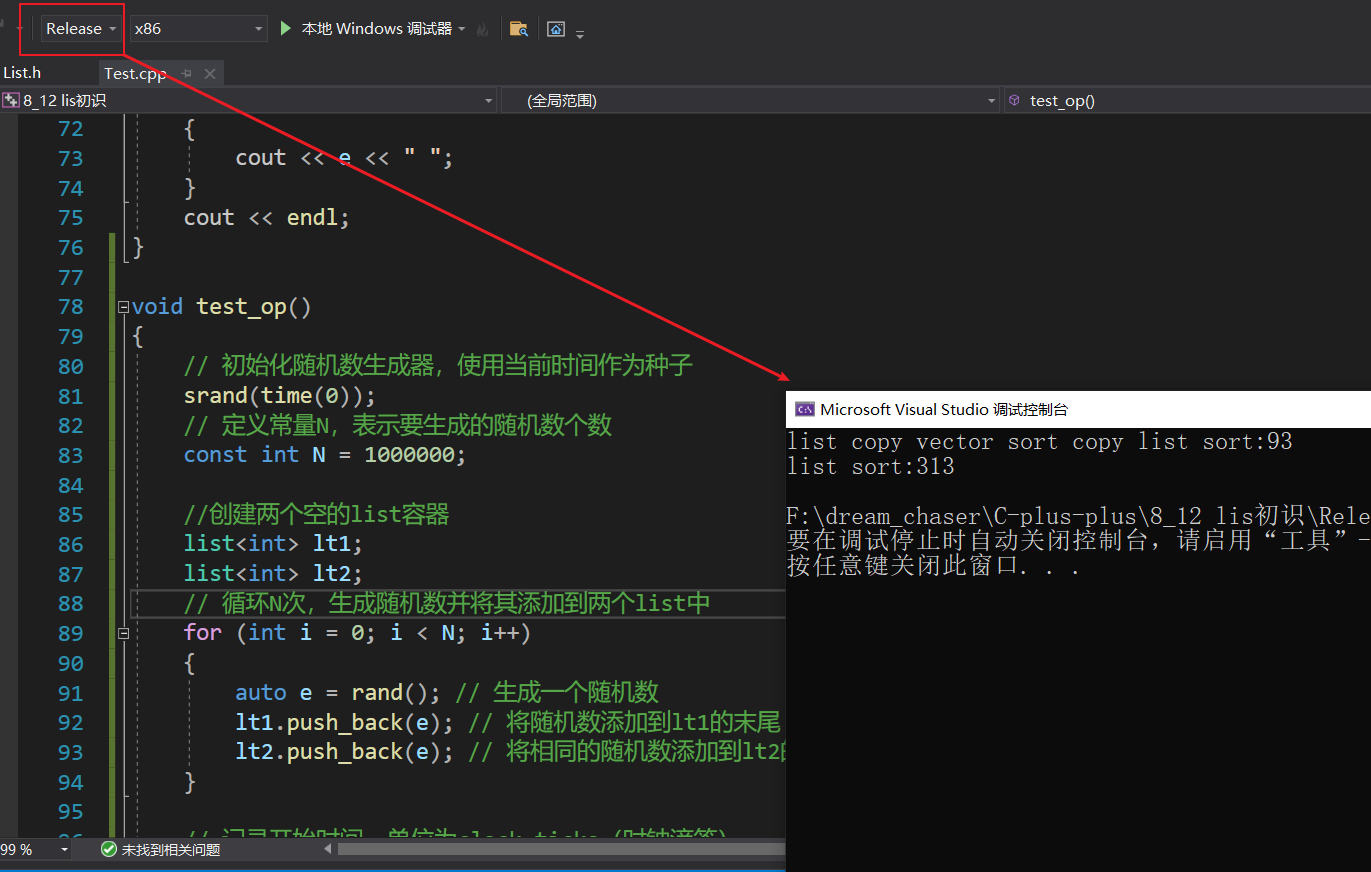
void test_op()
{
// 初始化随机数生成器,使用当前时间作为种子
srand(time(0));
// 定义常量N,表示要生成的随机数个数
const int N = 1000000;
//创建两个空的list容器
list<int> lt1;
list<int> lt2;
// 循环N次,生成随机数并将其添加到两个list中
for (int i = 0; i < N; i++)
{
auto e = rand(); // 生成一个随机数
lt1.push_back(e); // 将随机数添加到lt1的末尾
lt2.push_back(e); // 将相同的随机数添加到lt2的末尾
}
// 记录开始时间,单位为clock ticks(时钟滴答)
int begin1 = clock();//返回程序所消耗的处理器时间。
// 创建一个vector,使用lt2的begin和end迭代器初始化,复制lt2的内容
vector<int> v(lt2.begin(), lt2.end());
// 对vector v 进行排序,使用的是全局的std::sort函数,vector支持随机访问迭代器
sort(v.begin(),v.end());
// 将排序后的vector v的内容重新赋值给lt2,替换lt2当前的内容。
lt2.assign(v.begin(),v.end());
int end1 = clock(); // 记录结束时间
int begin2 = clock(); // 记录另一个操作的开始时间
lt1.sort(); // 直接对lt1进行排序,使用list容器自带的sort成员函数
int end2 = clock(); // 记录结束时间
// 输出两次排序操作所花费的时间(单位为clock ticks)
printf("list copy vector sort copy list sort:%d\n",end1 - begin1);
printf("list sort:%d\n",end2 - begin2);
}
8.unique and remove
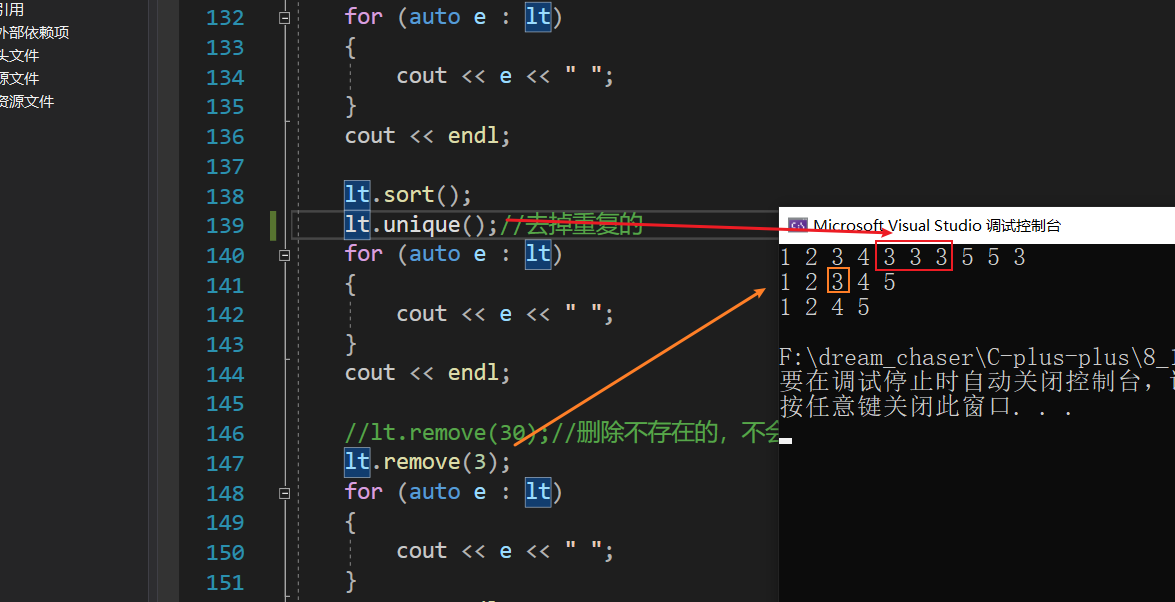
void test_list4()
{
list<int> lt;
lt.push_back(1);
lt.push_back(2);
lt.push_back(3);
lt.push_back(4);
lt.push_back(3);
lt.push_back(3);
lt.push_back(3);
lt.push_back(5);
lt.push_back(5);
lt.push_back(3);
for (auto e : lt)
{
cout << e << " ";
}
cout << endl;
lt.sort();
lt.unique();//去掉重复的
for (auto e : lt)
{
cout << e << " ";
}
cout << endl;
//lt.remove(30);//删除不存在的,不会报错
lt.remove(3);
for (auto e : lt)
{
cout << e << " ";
}
cout << endl;
}
8.splice
将元素从x转移到容器中,并将它们插入位置。

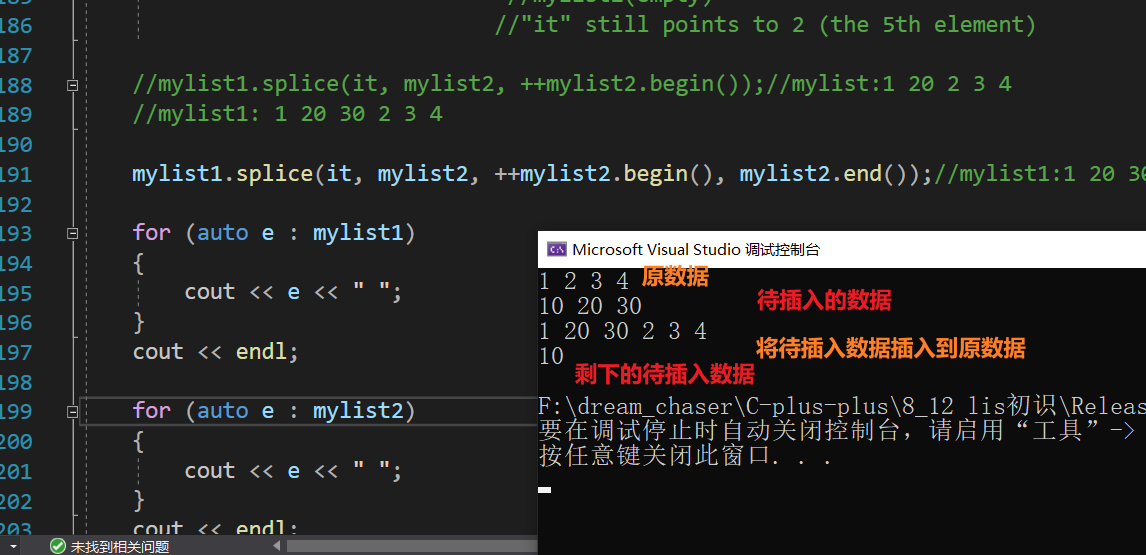
void test_list5()
{
list<int> mylist1, mylist2;
list<int>::iterator it;
for (int i = 1; i <= 4; ++i)
{
mylist1.push_back(i);//mylist1: 1 2 3 4
}
for (int i = 1; i <= 3; i++)
{
mylist2.push_back(i*10);//mylist2:10 20 30
}
it = mylist1.begin();
++it; //指向mylist1里面的2元素
for (auto e : mylist1)
{
cout << e << " ";
}
cout << endl;
for (auto e : mylist2)
{
cout << e << " ";
}
cout << endl;
//mylist1.splice(it,mylist2);//mylist1:1 10 20 30 2 3 4
//mylist2(empty)
//"it" still points to 2 (the 5th element)
//mylist1.splice(it, mylist2, ++mylist2.begin());//mylist:1 20 2 3 4
//mylist1: 1 20 30 2 3 4
mylist1.splice(it, mylist2, ++mylist2.begin(), mylist2.end());//mylist1:1 20 30 2 3 4
for (auto e : mylist1)
{
cout << e << " ";
}
cout << endl;
for (auto e : mylist2)
{
cout << e << " ";
}
cout << endl;
}
9 *list***的迭代器失效 **
前面说过,此处大家可将迭代器暂时理解成类似于指针,**迭代器失效即迭代器所指向的节点的无效,即该节点被删除了**。因为**list****的底层结构为带头结点的双向循环链表**,因此**在list****中进行插入时是不会导致****list****的迭代器失效的,只有在删除时才会失效,并且失效的只是指向被删除节点的迭代器,其他迭代器不会受到影响**。
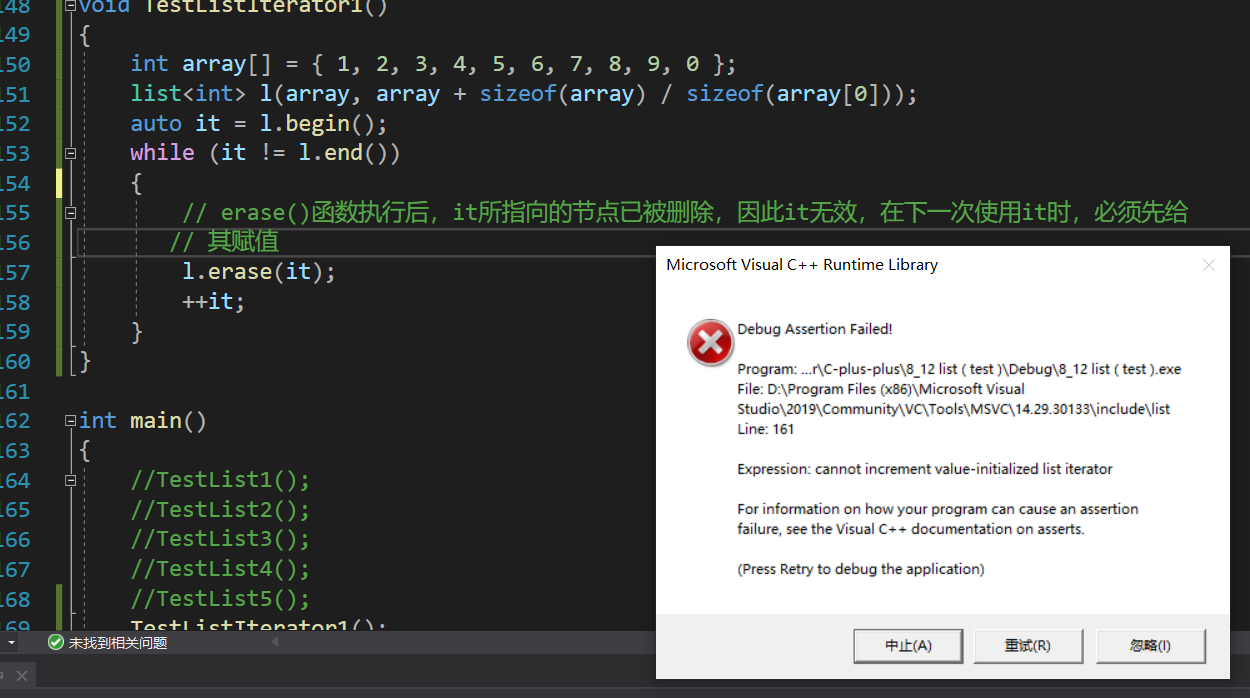
pos这个位置使用完毕就失效了:
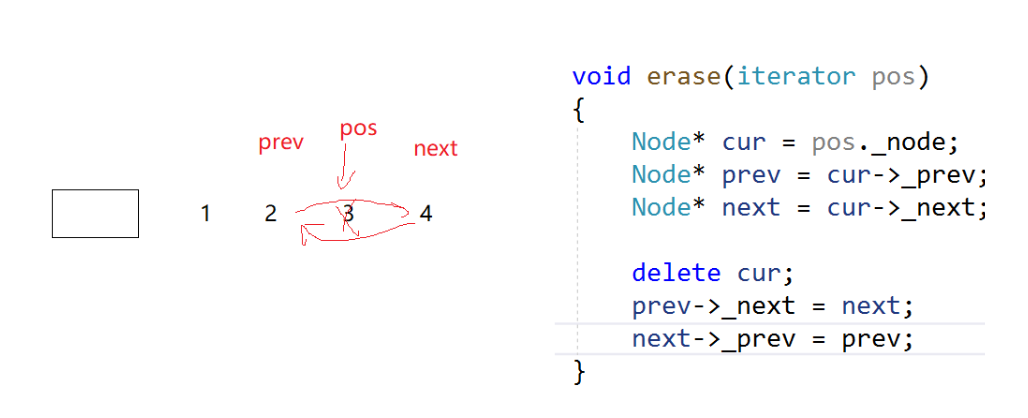 改正:
改正:
void TestListIterator()
{
int array[] = { 1, 2, 3, 4, 5, 6, 7, 8, 9, 0 };
list<int> l(array, array + sizeof(array) / sizeof(array[0]));
auto it = l.begin();
while (it != l.end())
{
l.erase(it++); // it = l.erase(it);
}
}
🔧本文修改次数:0
🧭更新时间:2024年 5 月 14 日
版权归原作者 Dream_Chaser~ 所有, 如有侵权,请联系我们删除。